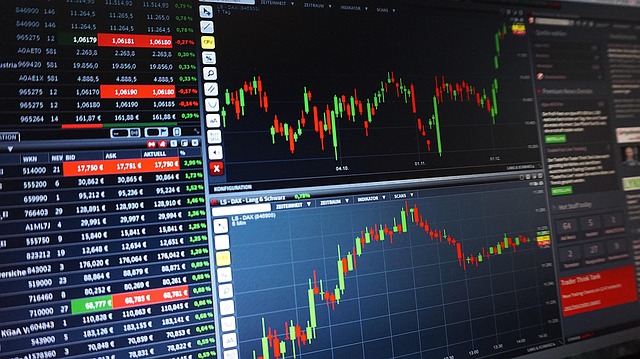The Invisible Hand of Algorithmic Trading: Reshaping Financial Markets
The world of finance is undergoing a seismic shift, driven by the relentless march of technology. At the forefront of this transformation is algorithmic trading, a sophisticated approach that's reshaping how financial markets operate. This cutting-edge strategy, leveraging complex mathematical models and high-speed computer programs, is not just changing the game—it's redefining the playing field entirely.

The Evolution of Algorithmic Trading
The roots of algorithmic trading can be traced back to the 1970s when computerized trading systems first emerged. However, it wasn’t until the late 1990s and early 2000s that algo-trading truly began to take shape. The advent of electronic communication networks (ECNs) and improvements in computing power paved the way for more sophisticated trading algorithms.
Initially, these algorithms were primarily used for simple tasks like breaking large orders into smaller ones to minimize market impact. Over time, they evolved to incorporate complex statistical models, machine learning, and artificial intelligence, enabling them to analyze vast amounts of data and make split-second trading decisions.
How Algorithmic Trading Works
At its core, algorithmic trading involves using computer programs to execute pre-defined trading instructions based on factors such as timing, price, quantity, or any mathematical model. These algorithms can analyze market data across multiple exchanges in microseconds, identifying trading opportunities that would be imperceptible to human traders.
Modern algo-trading systems can process news feeds, economic indicators, and even social media sentiment in real-time, adjusting their strategies accordingly. Some advanced algorithms even employ natural language processing to interpret financial reports and news articles, translating this information into actionable trading signals.
The Impact on Market Dynamics
The proliferation of algorithmic trading has fundamentally altered market dynamics. One of the most noticeable effects is increased market liquidity. By executing numerous small trades rapidly, algo-trading has narrowed bid-ask spreads and reduced transaction costs for all market participants.
However, this increased liquidity comes with its own set of challenges. The speed and volume of algorithmic trades can lead to increased market volatility, especially during times of stress. Flash crashes, like the one experienced in May 2010, have raised concerns about the potential for algorithmic trading to exacerbate market instabilities.
Opportunities and Challenges for Investors
For institutional investors, algorithmic trading offers numerous advantages. It allows for the execution of large orders with minimal market impact, reduces the risk of human error, and enables the implementation of complex trading strategies across multiple markets simultaneously.
Retail investors, while not directly engaging in high-frequency trading, can benefit from the increased liquidity and tighter spreads that algo-trading brings to the market. Additionally, some brokerages now offer algorithmic trading tools to retail clients, democratizing access to these sophisticated strategies.
However, the rise of algo-trading also presents challenges. The speed and complexity of these systems can create an uneven playing field, potentially disadvantaging less technologically advanced traders. There’s also the risk of systemic issues, as demonstrated by incidents like the 2012 Knight Capital glitch, where a software bug led to millions in losses in just 45 minutes.
Regulatory Response and Future Outlook
Regulators worldwide have been grappling with how to oversee algorithmic trading effectively. In the United States, the Securities and Exchange Commission (SEC) has implemented rules requiring trading firms to have risk controls and compliance measures in place for their algorithmic trading systems.
Looking ahead, the future of algorithmic trading seems poised for continued growth and innovation. Advancements in artificial intelligence and machine learning are likely to lead to even more sophisticated trading algorithms. We may see the emergence of self-learning algorithms that can adapt to changing market conditions without human intervention.
Key Considerations for Navigating the Algo-Trading Era
• Stay informed about market structure changes and how they might affect your investment strategy
• Consider the potential impact of algorithmic trading when analyzing market trends and volatility
• Be aware of the limitations of traditional technical analysis in markets dominated by algo-trading
• Explore platforms that offer algorithmic trading tools to retail investors, but approach with caution and thorough understanding
• Diversify your investment strategy to mitigate risks associated with market volatility potentially exacerbated by algo-trading
As algorithmic trading continues to evolve, it will undoubtedly play an increasingly significant role in shaping financial markets. While it offers numerous benefits in terms of efficiency and liquidity, it also introduces new complexities and potential risks. For investors and market participants, understanding the implications of this technological revolution is crucial for navigating the ever-changing landscape of modern finance.





